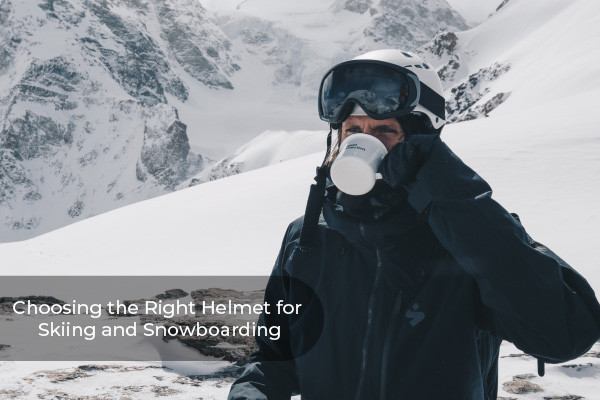Choosing the Right Ski or Snowboard Helmet
Posted by Dan Goodman on 10th Dec 2019
If you ask us, snow helmets should be mandatory on the slopes, especially when you consider that skiing and snowboarding involve you charging down a mountain at high speeds while narrowly dodging ski instructors, trees, and cliffs along the way. There are plenty of reasons to wear a ski or snowboard helmet, but all you need to remember is that your head may be the most valuable asset you own, and for the low price of $100 to $300, you can get full coverage on the mountain, making your helmet the cheapest insurance you'll ever buy.
Before you ask, yes, there are helmets made specifically for different activities and no, your bike helmet can’t double as your ski helmet. Not only does a bike helmet on the ski hill make you look like more of a jerry than 3-inches of gaper gap, but it also lacks the proper safety standards to help keep you safe(r) on the slopes.
With that out of the way, we can move on to the important things like learning how to properly fit a helmet to your head, understanding how a helmet is constructed, picking out the best add ons, and deciphering helmet certification standards.
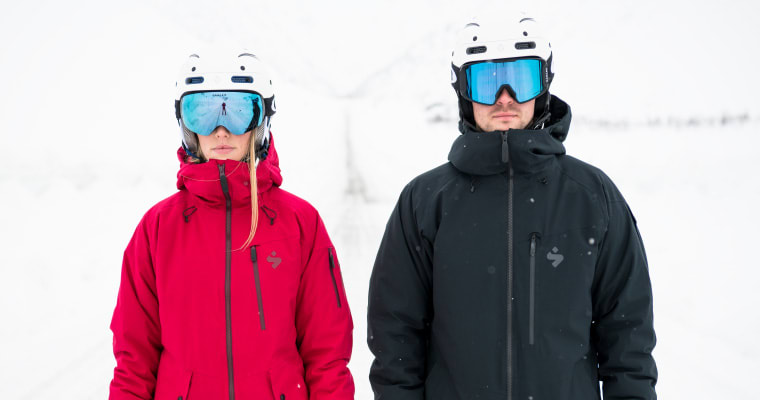
Fitting Your Snow Helmet
Outside of simply wearing a helmet in the first place, the most important thing to know is how to fit one properly. If you’re lucky enough to be in Utah, drop by the Campman retail store in Sandy and we’ll help you find the perfect fit. If you’re shopping online, here are a few tips to make sure you get it right the first time:
- Measure your head circumference with a fabric tape measure. Take a look at the manufacturer’s sizing chart to be sure where they suggest you measure, but a good rule of thumb is to measure 1-inch above your eyebrows. Once you get your measurement, compare it with the sizing chart and choose the corresponding size.
- Once you receive the helmet, make sure it feels like a snug fit on your head. Put it on, add any included padding as necessary and/or cinch the internal headband down until it feels tight on your head without giving you a headache. The helmet should sit comfortably where a hat would, covering most of your forehead, and the chinstrap should rest against your throat. Clasp the chinstrap and shake your head from side to side. If it wiggles or shifts during this process, it is too large and needs to be tightened down or exchanged for a different size. Similarly, if you find that the helmet has to be forced onto your head or that it hurts at all, you should exchange for a larger size.
- Don’t forget to try the helmet on with any hats or headbands that you might want to wear underneath to make sure that it is the right size for your needs.
- If you need to make an exchange, do so before you take the helmet out for a day on the snow. Most shops cannot and will not be able to resell used helmets, so for your sake, the company’s sake, and for the sake of a perfectly good helmet not being thrown away, make sure you have the size you want before you use it.
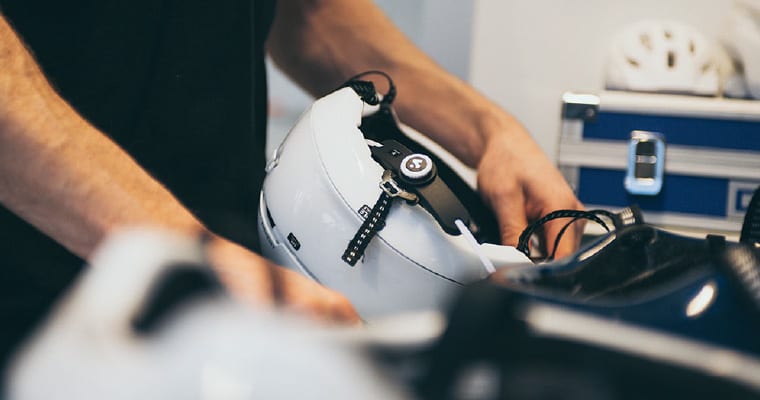
The Anatomy of a Helmet
Boiled down to its essence, you’d think a helmet was simply just a hard piece of plastic built to protect your head against impacts, but modern snow helmets have a lot more to them than that. Specifically, helmets tend to be split into two parts, an outer shell and a liner.
Outer Shell
The shell of your helmet is the hard plastic outer layer typically made of ABS plastic (acrylonitrile butadiene styrene) or another similar hard plastic-type. This is your first protective layer against harsh impacts on snow, ice, rocks, body parts, etc.
Liner
This layer lives under the shell and is often made from EPS (expanded polystyrene) foam. The liner is designed to help absorb the shock and force of an impact, often compressing in the event of a fall, reducing its ability to function properly in the future. Determining whether or not the liner has compressed can be tricky, so it is best to err on the side of caution after a substantial shock has been applied to the helmet during a fall.
Helmet Construction Types
With three major types of helmets on the market: hybrid shell, in-mold and injection-molded, you get to decide what features you want and how much you want to pay, but it’s important to understand the major differences between them before you get one on your head and decide to yard sale under the tram.
In-Mold Helmets
This design is built to reduce the force of a large, single impact by molding a thin, hard-plastic outer shell to an EPS foam or Koroyd liner. In-mold helmets tend to be less bulky and lighter weight than many injection-molded styles.
In-Mold Helmet Recommendations: Julbo Hal Ski Helmet, Smith Mission MIPS Ski Helmet, and the Sweet Protection Blaster II MIPS JR Helmet
Injection-Molded Helmets
In this design, a hard shell plastic, typically ABS, is glued onto a pre-molded EPS foam liner. While typically heavier than in-mold helmets, injection-molded designs are often less money and handle light wear and tear better.
Injection-Molded Helmet Recommendations: Sweet Protection Igniter MIPS Helmet and the Smith Gage Ski Helmet
Hybrid Helmets
This style takes an ABS hardshell and adds to it all of the lightweight benefits of an in-mold design for a helmet that is low profile, sleek, and ultralight.
Hybrid Helmet Recommendations: Sweet Protection Ascender MIPS Helmet, Smith Vantage MIPS Ski Helmet, and the Sweet Protection Switcher Women’s MIPS Ski Helmet
Optional Features
As with most things in life, the more features you pick, the higher the price tag will be, but that doesn’t mean that having a helmet with all the bells and whistles isn’t worth the money, especially when your safety is on the line.
Adjustable Fit Systems
There are many different fit systems for helmets but the most popular types are foam adjustment fit systems, ratchet adjustment systems, and dial adjustment systems. Foam adjustment systems consist of foam inserts of varying thickness that can be placed inside of a helmet for a tighter fit. Ratchet systems let you cinch down a built-in headband down with a micro-adjustment system in the rear. Dial adjustment systems are similar to ratchet-based systems but they use a simple dial that can be easily adjusted on the go to tighten the internal headband.
Vents
Most modern helmets come with some sort of built-in ventilation to help keep your head cooled off and to eliminate condensation on your goggle lenses when possible. For ski and snowboard helmets, your options are either open vents or adjustable vents that let you open or close them as necessary. This can come in handy when it’s nuking outside and you want to seal out as much snow as possible or when a chilly morning has you ready to batten down all the hatches.
MIPS
MIPS stands for the Multi-Directional Impact Protection System which is a thin, low-friction layer found in between the comfort liner and the EPS foam liner in a helmet. This layer allows your head to move inside of the helmet which can help to reduce the force of angled impacts on the brain and significantly reduce the overall risk of brain damage in a fall.
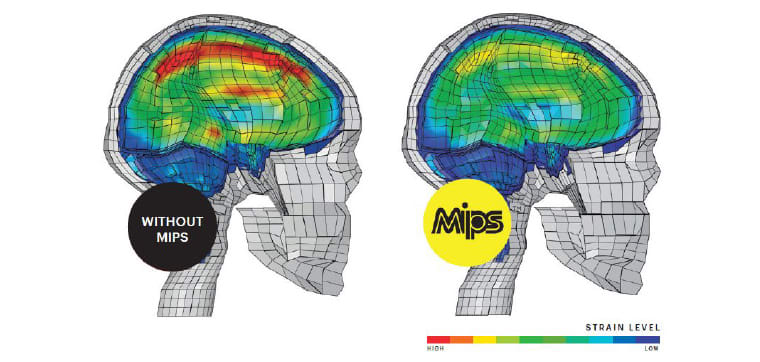
Ear Pads
Often, snow helmets come with built-in ear pads for extra comfort and warmth in the cold. Some helmets offer a removable ear pad option which can be handy for those of us who like to ski uphill or for sunny spring days spent in a t-shirt and shorts.
Koroyd
Some helmet manufacturers have replaced their EPS foam with Koroyd welded tubes. These co-polymer extruded tubes create a consistent thickness, form a uniform connection throughout the mold, and allow the polymer to absorb larger amounts of energy than EPS foam upon impact, all while remaining lightweight and breathable. Koroyd is easily recognized by looking for its signature honeycomb design that can be seen through a helmet's vents as with the Smith Vantage MIPS Ski Helmet.
Audio Compatibility
Headphones under your ear pads giving you an earache? Opt for an audio compatible helmet, snag yourself some Audio Chips, and bump your tunes without paying for it later.
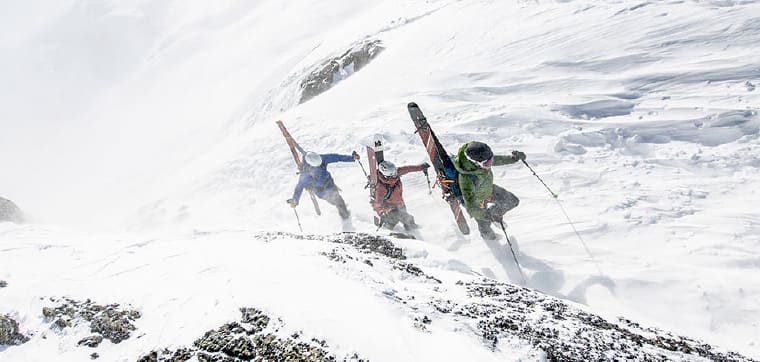
Certification Types
There are many different certification standards for helmets, but what you’ll want to look for are the safety standards specific to your sport, which means they are rated to reduce the risk of head injury specifically for your activity. Remember, a helmet does not make you invincible and is only a helpful tool in the event of a crash, impact or fall. None of these standards guarantee that you will not be injured in a crash and these helmets are simply there make an injury less likely.
ASTM F2040
This is a common standard in the U.S. for helmets used in non-motorized recreational snow sports. Helmets tested under this standard are subject to hot, cold, and wet strength retention tests, positional stability tests, and impact tests.
CE EN1077 Class A
This is a European standard requiring ski and snowboard helmets to cover the top, rear, and side of the head, including the ears. Helmets tested under this standard are subject to tests on the field of vision, shock absorption, shell penetration, and built-in features to keep the helmet attached to the user’s head. This certification is only required for ski racing helmets.
CE EN1077 Class B
This is a European standard requiring ski and snowboard helmets to cover the top, rear, and side of the head, not including the ears. Helmets tested under this standard are subject to tests on the field of vision, shock absorption, shell penetration, and built-in features to keep the helmet attached to the user’s head.
EN 12492
This is a European standard for climbing and mountaineering helmets with a focus on falling objects impacting the helmet from the front, top, side, or rear. Helmets tested under this standard are subject to penetration and retention system tests only. A helmet that meets this standard alone is not properly certified for skiing and snowboarding, and is suitable for traditional mountaineering, but not ski mountaineering.
Campman is an outdoor retail store located in Salt Lake City, Utah that specializes in gear and equipment for camping, skiing, backpacking, climbing, and everything in between. We understand that the difference between a bad memory and the adventure of a lifetime can come down to the gear you take with you when you head outdoors, and we want our customers to have the best experiences possible. When it comes to getting outside, we get it, and we’ll get you the gear you need to get there.
Questions? Feel free to contact us by phone at (801) 999-8117 or by email at sales@campman.com.
Share on:

